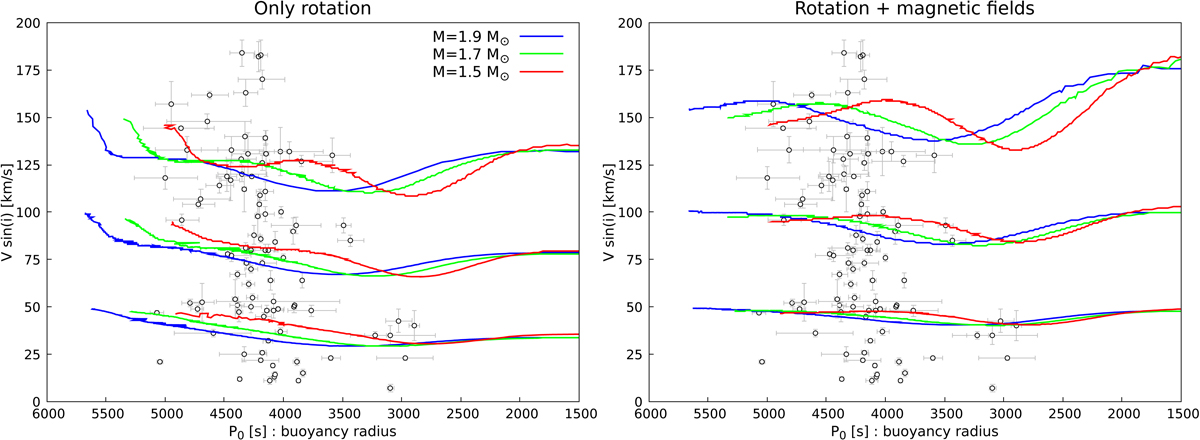Fig. 5.

Download original image
Surface rotational velocity as a function of buoyancy radius. The lines correspond to our models with different initial masses, computed at three different initial rotation rates for each initial mass. Left: driven by hydrodynamical processes alone. Right: same, but including internal magnetic fields. The data points correspond to γ Dor stars for which surface velocities are available from the literature (see Sect. 2); buoyancy radii are taken from Li et al. (2020). The surface velocity of the models is multiplied by π/4 to average over the unknown inclination angles of the stars.
Current usage metrics show cumulative count of Article Views (full-text article views including HTML views, PDF and ePub downloads, according to the available data) and Abstracts Views on Vision4Press platform.
Data correspond to usage on the plateform after 2015. The current usage metrics is available 48-96 hours after online publication and is updated daily on week days.
Initial download of the metrics may take a while.


